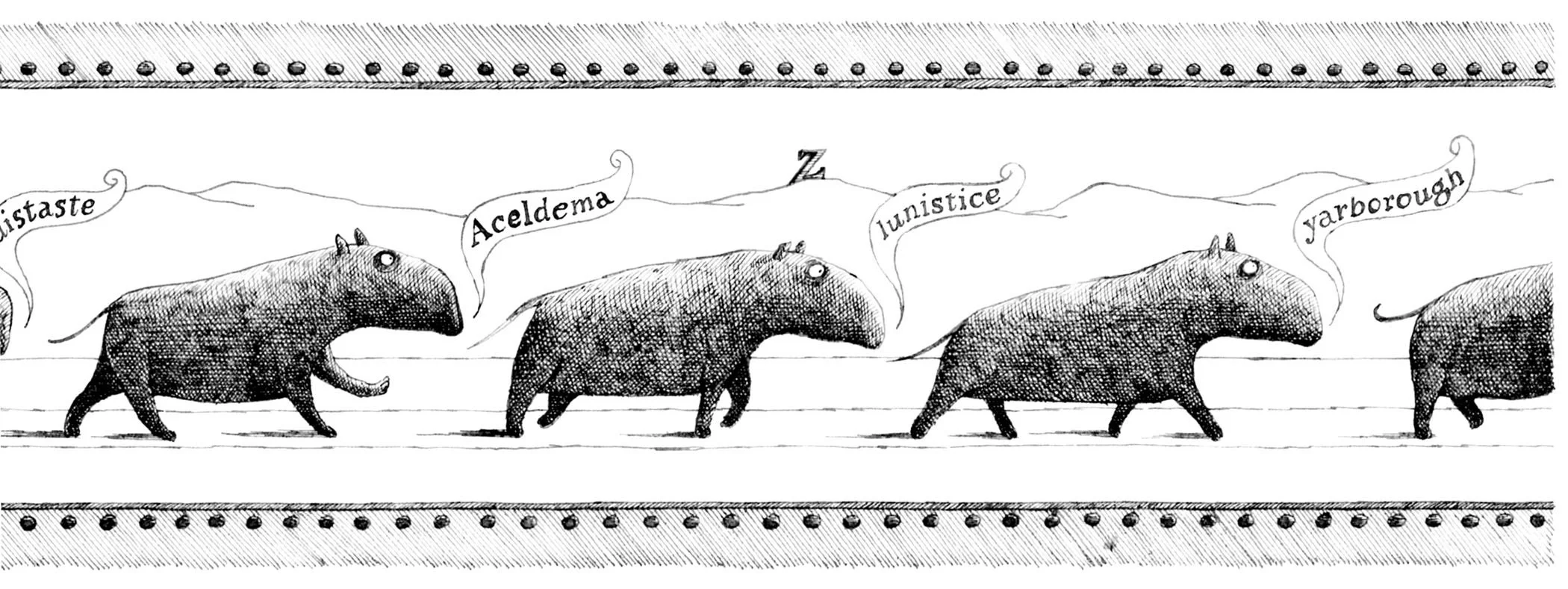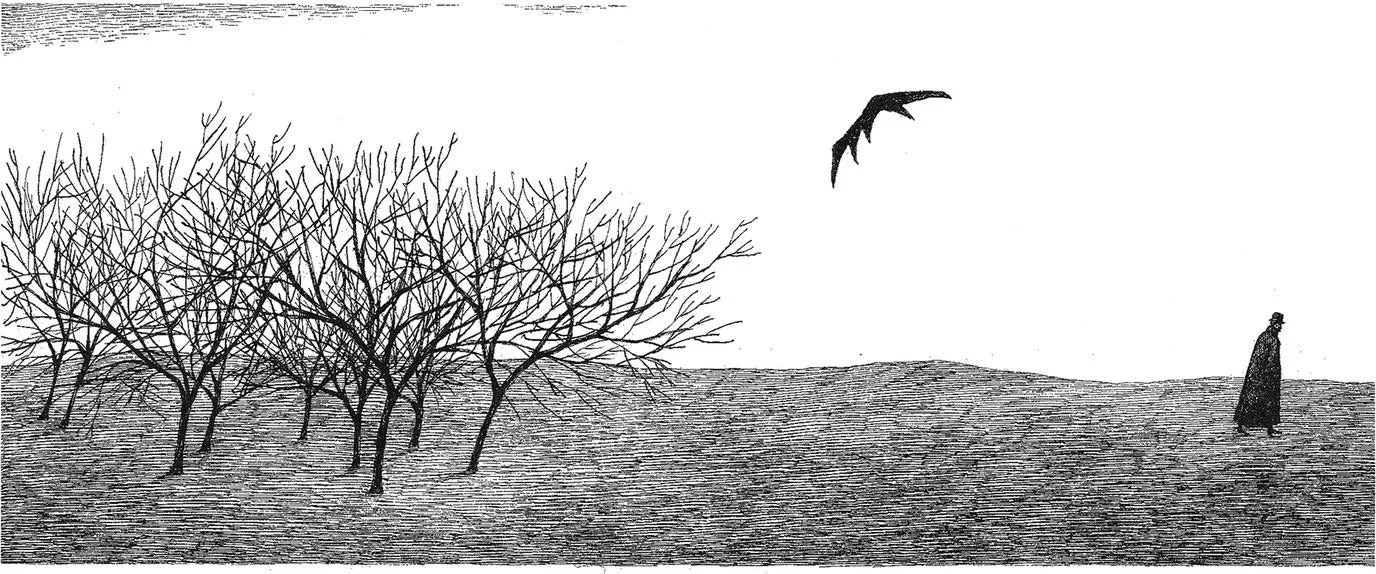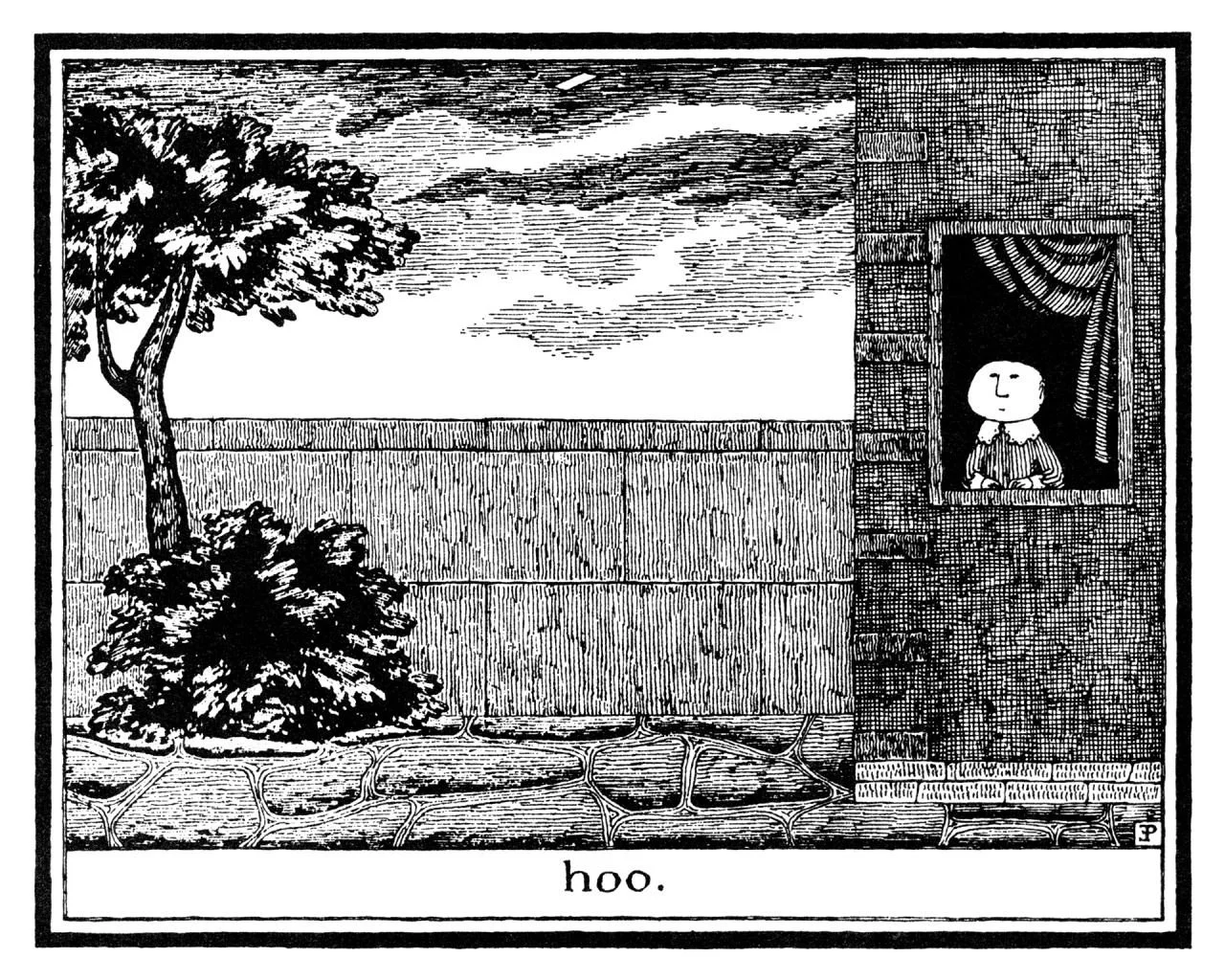Hippity Wippity: Edward Gorey and the Language of Nonsense
While known as the creator of over a hundred self-authored and illustrated works such as The Doubtful Guest and The Gashlycrumb Tinies, as a prolific illustrator for other authors’ works, as a renowned set and costume designer (winning a Tony award for the Broadway production of Edward Gorey’s Dracula), as well as the artist for the animated intros to PBS Mystery!, Edward Gorey should also be considered one of the primary writers of Nonsense Literature.
Hippity Wippity Edward Gorey and the Language of Nonsense explores Gorey’s embrace of this genre. Nonsense is a genre? Yes it is—and a very challenging one that revels in breaking down any expected narratives and structures, that lobotomizes language, that confuses with inexplicable storylines and thrusts the reader into an active participation. Note that the above sentence describing Nonsense Literature may aptly be used to describe Gorey’s entire body of work.
Nonsense is a logical place for the Gorey House to go this year. Like Murder He Wrote, it showcases the complex relationship between Gorey and his readers. If Murder He Wrote really pivoted around the red herring, false clues and misleading narratives (remember: “By indirections shall we find directions out”—not actually a quote by Agatha Christie, but a line from Hamlet), so Hippity Wippity is about the fluid nature of image and language—the realization that everything is open to innumerable interpretations and Gorey, in his work, requires you to do so. Nonsense does not imply the absence of sense, but rather another way of arriving at a truth—a roundabout way to some self-exploration. In nonsense, as in so many things, it isn’t about the destination so much as the journey itself.
Being a life-long Anglophile, Gorey was influenced by Nonsense’s two famous early practitioners: Edward Lear and Lewis Carroll. With a Harvard degree in French Literature, Gorey’s Nonsense works also reflect the influence of French Symbolist and Surrealist writers. Add to this Gorey’s infatuation with silent film—felt in the static medium-shot black and whiteness of his compositions. Add Gorey’s Taoism, its acceptance of a random existence which underlies so much of his work, and then include a love of dance, Agatha Christie, and a wry humor. What you end up with is Nonsense filtered through the twentieth century, a journey of imagery and language that is whimsical and stark, mysterious and beautiful.
Humans are essentially meaning-making machines, seeking patterns and logic in randomness—finding human faces in carpet patterns and linoleum tiles, seeing charging dragons in clouds. It might be our fundamental nature to bring order to disorder, method to what seems arbitrary. The imposition of order is exactly what Nonsense asks you to do— and Gorey’s Nonsense is rich in interpretation and at the same time defies interpretation. Gorey allows Nonsense to render a tear in the normal fabric of our lives, offering a brief opportunity to gaze upon the order, or the chaos that runs beneath everything. Some call it a dark whimsy, but we recognize it as Hippity Wippity—something that doesn’t assist you in making sense of it, and offers no hint as to where you will be going.



